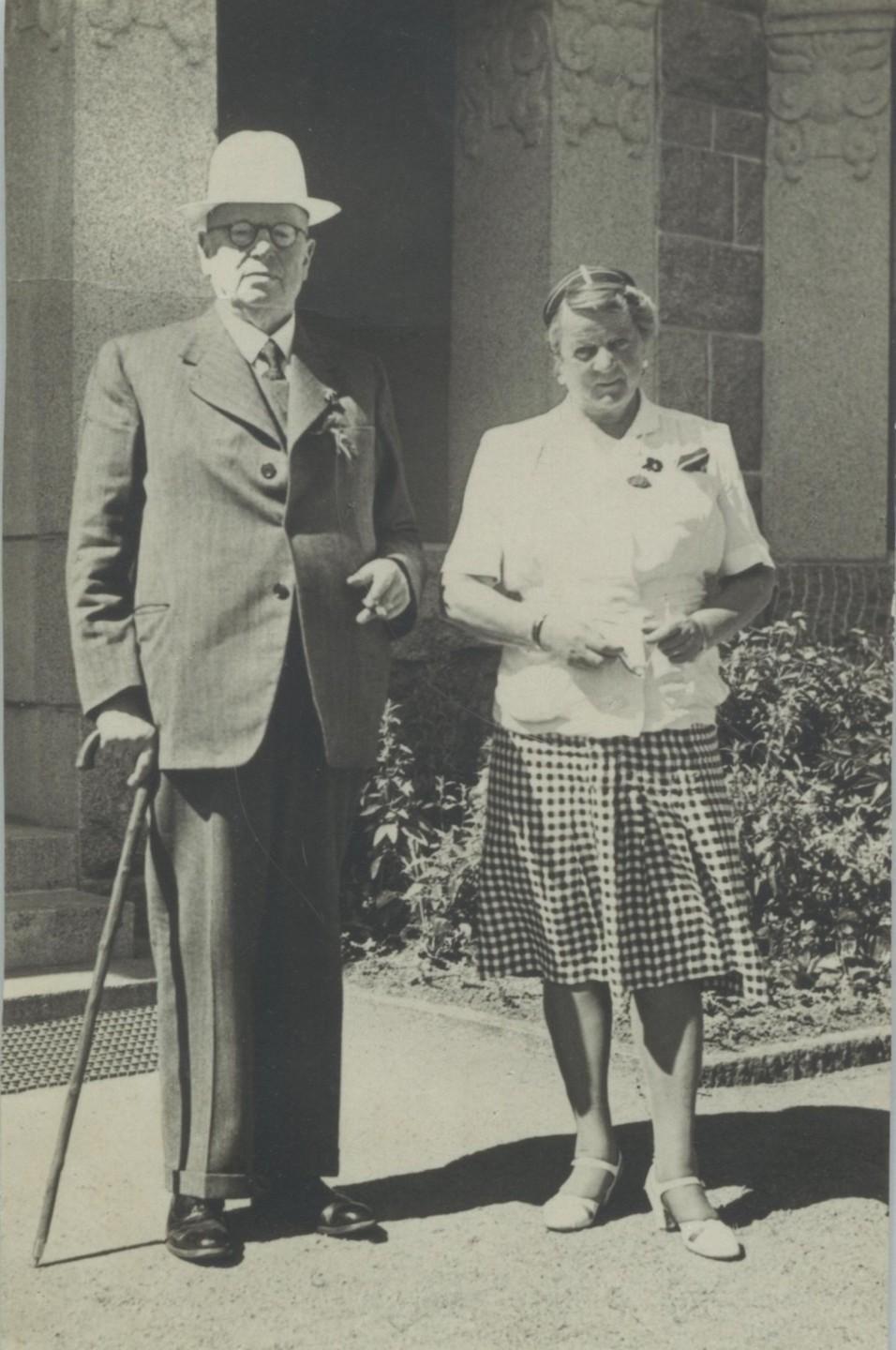Allina Amanda Paasikivi (née Valve, until 1907 Hildén) 1879–1960
Alli Paasikivi was President J.K. Paasikivi’s second wife. She was the diplomatic mediator between her cantankerous husband and politicians and civil servants while Paasikivi concentrated on running the country. She also managed all the family finances, including the Jukola farm. She was fondly known as Auntie Alli for her successful work for child protection and was, among many other things, one of the founders of the Foundation for Paediatric Research. She had a successful career at Kansallis-Osake-Pankki from where she resigned as a clerk to marry Juho Kusti in 1934.
Entering the Finnish-speaking educated class
Alli Paasikivi had a happy childhood. She was born on 19 November in 1879 in Kärkölä to the family of cobbler Andreas Hildén and Maria née Tegelman.Alli Hildén started school in Mäntsälä. After the family moved to Helsinki in 1888, she enrolled in primary school in Kasarmikatu and after that in the secondary school at Helsingin Suomalainen Yhteiskoulu (SYK), a Finnish-speaking co-educational school. The school produced numerous future leaders and cultural influencers. This made it an excellent place to build networks. With their own contribution, the family was thus part of the nationwide project of the moment, to create a Finnish-speaking educated class. The family name Hildén was “Finnicized” in 1907 to Valve.
Alli was a good student, excelling particularly in mathematics, but was also a keen participant in cultural events. She left school in the second year of the upper secondary school which was commonplace at that time. Finishing upper secondary school and taking the matriculation exam was an entry exam to the university and few women at that time chose that path.
Bank clerk
Alli Hildén was a gregarious extrovert who enjoyed performing. She landed a position as a trainee at the Finnish Theatre (from 1902 the Finnish National Theatre). She appeared in the theatre’s two opening productions. She competed against the most stellar actors of the time such as Ida Ahlberg, Elli Tompuri and Hanna Granfelt, and failed to secure a permanent position. She decided to change careers and became a bank clerk in Kansallis-Osake-Pankki in 1904, where she rose from a basic clerk to head cashier and eventually a purchaser in the bill of exchange department,thanks to her good head for numbers and excellent organisational skills. She was strict but fair,and would often help her artist friends.
Alli Valve became Director J.K. Paasikivi’s confidante who would always brief him the first thing in the morning. When Paasikivi lost his temper, Alli Valve was called to manage the situation. And manage she did. As Paasikivi’s wife Anna became ill for several years and eventually died in December 1931, Paasikivi began to rely more and more on his purchaser at the bank. The man who used to be extremely grumpy in the mornings had mellowed.
The young Alli Valve was described as “the queen of the ball and a beauty line none other”.According to her passport issued in 1927, she was 162 cm tall and she had blue eyes and black hair. (1) Little is known about Alli Valve’s earlier relationships, other than there had been numerous suitors.
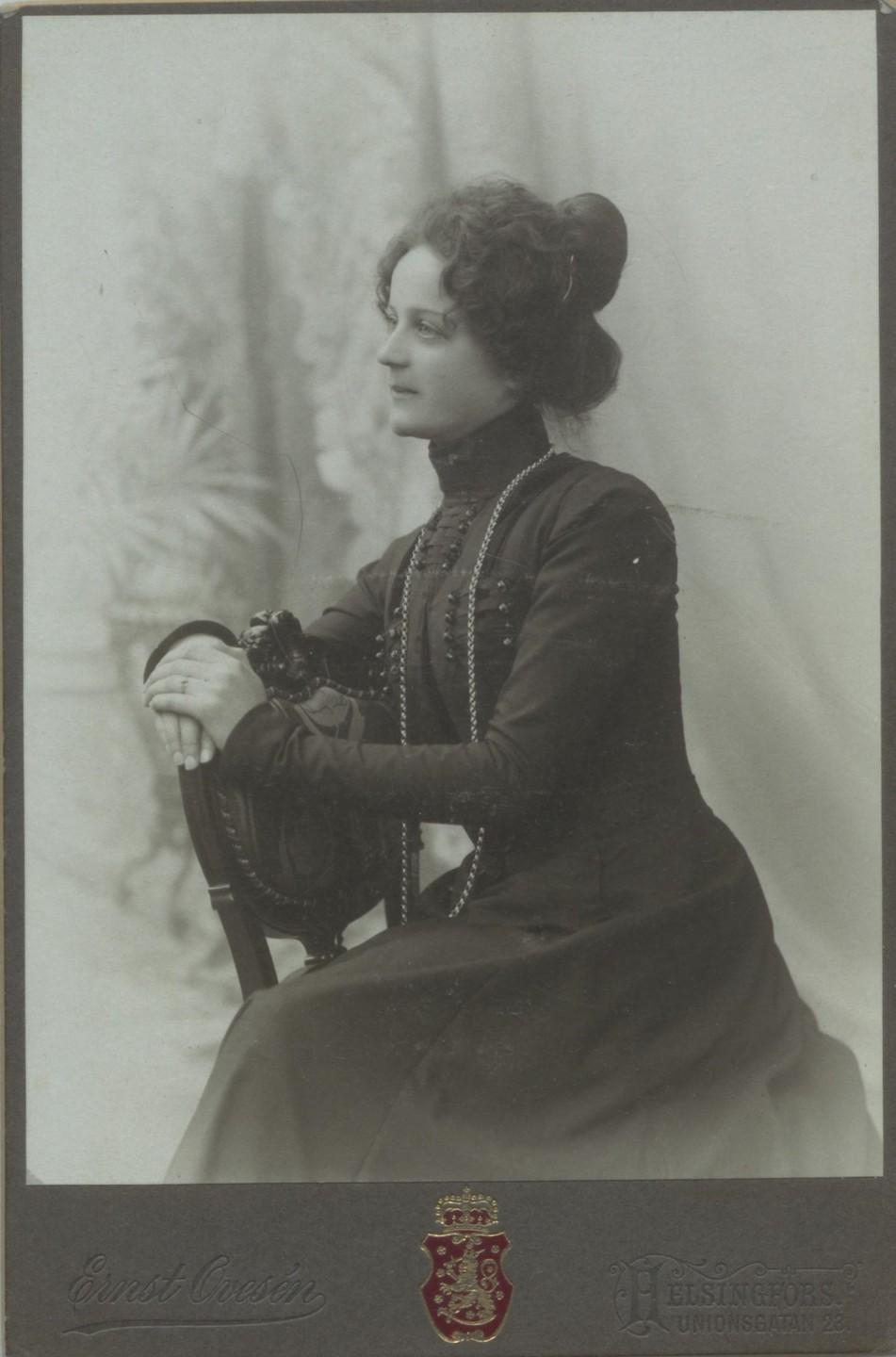
In the 1907 Conferment Ceremony at the University of Helsinki, she served as the ceremonial wreath-weaver, as is the Finnish university tradition, for her schoolmate Ilmari Palmén, whose master’s degree was being conferred.Ilmari Palmén later became a lawyer of strong right-wing tendencies.Eino Suolahti also went to school with Alli and was among her friends. Little is known about Alli Valve’s political opinions, although she would keep company mainly with friends with Fennophile interests. She was probably never a member of the National Coalition Party and the journal of the women’s organisation of the party Suomen Nainen seldom commented on her activities even as First Lady. She was perhaps what would later be called an “independent conservative”.
The reasons why she remained unmarried for such a long time are not known. In the 1910s, when Alli was in her thirties, only one half of women of her age living in cities were married. Married women were granted their full rights as late as in 1931, which may be one of the reasons why some women chose not to marry. Another prohibitive factor may have been the expectation that once married, women would give up work and stay home to look after their husbands and children. Alli Valve took active part in the cultural life of the capital and travelled with her friends. She took responsibility for her mother and her widowed sister, Aino Koskimies, and her son. The family lived together in Mariankatu in Helsinki. Aino Koskimies’ husband, Väinö Koskimies, an engineer, had died in 1915 when their son Aarne was only a few months old. Aarne Koskimies later became a specialist in internal medicine and a close friend to the Paasikivis.
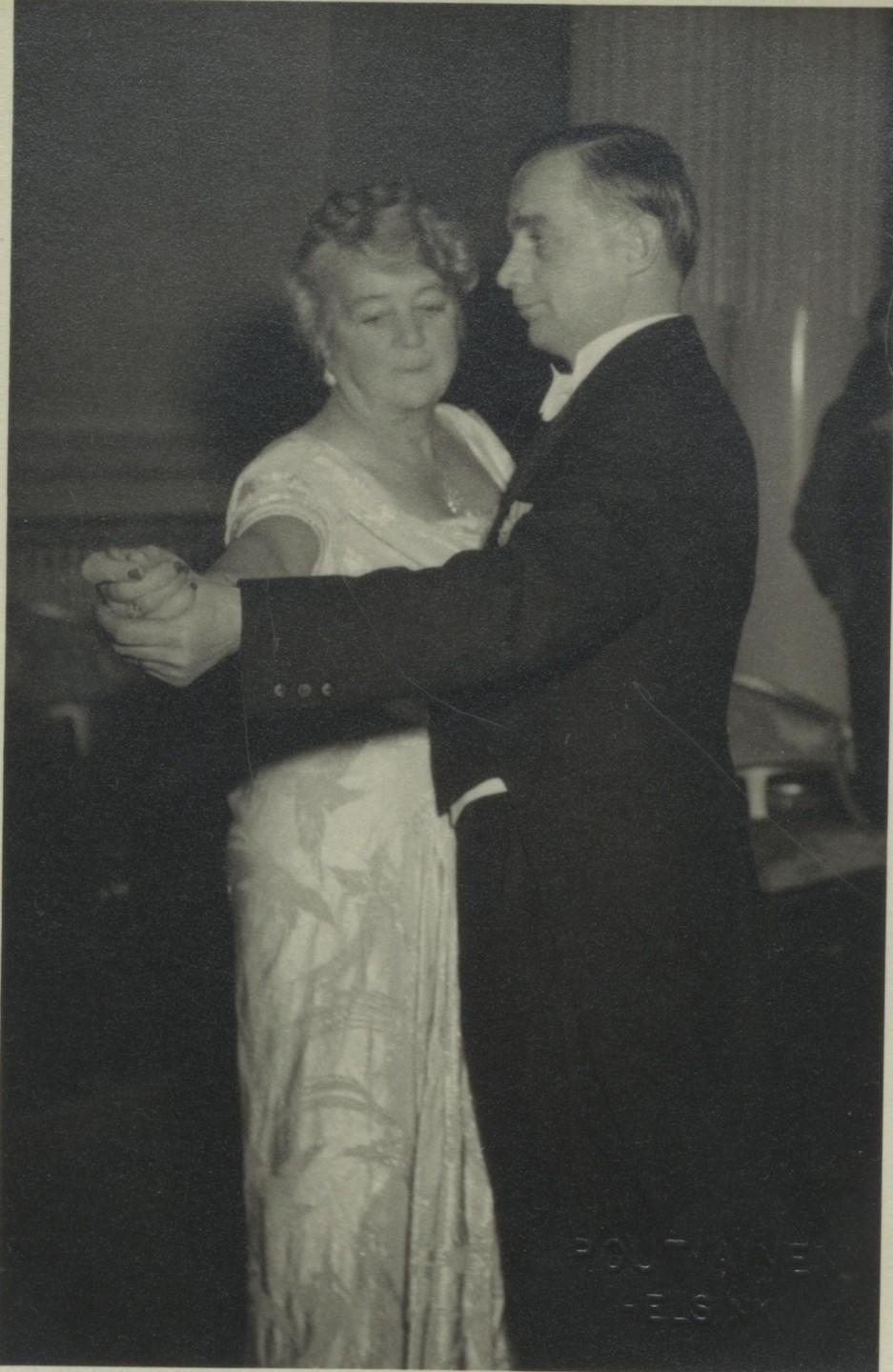
Alli Paasikivi’s nephew, Aarne Koskinen, Doctor of Medicine and Surgery, was the apple of her eye as a child and her confidant as an adult. Alli Paasikivi dancing at the Independence Day Reception in the Presidential Palace.
Photo: J.K. Paasikivi Archive, National Archive.
Marriage at a mature age
When Juho Kusti became a widow, his collegial friendship with Alli began to extend outside the office hours. Rumours were circulating: the director and purchaser had been spotted picking flowers in a forest together. The story might be a cliché, a director marrying his secretary, only Alli Valve was 54 years of age with a long professional career under her belt and there was nothing cliché about her. She was not prepared to give up her career, like women who married young typically did. When she and Juho Kusti married in January 1934, she had the idea that she would retire happily and peacefully with her husband who was 63. Little did she know how turbulent the years to come would be!
That this was Juho Kusti’s second marriage was another challenge. However, she maintained a cordial relationship with Juho Kusti’s family. “Auntie Alli” took control of the family life with great gusto as her husband withdrew to look after the matters of the country. Of the stepchildren, Annikki, who had trained as an architect and never married, became closest to Alli and they frequently travelled abroad together. Alli was also a kind step grandmother to Paasikivi’s two grandchildren, Juhani and Sinikka (later Couchman).
The relationship between Alli and Juho Kusti was warm and filled with humour. Juho Kusti would not show his temper to Alli. When they were apart, they would write to each other every day. The letters begin with “Darling Alli” and end with “Your Juho”, or “Be well, a kiss and farewell” and “Darling Juho” and “Your very own Alli”. The letters were short, like modern day e-mails, where the couple told each other news about whom they had seen and how the family was, what the weather was like and if there were any health issues. (2)
Difficulties
The couple’s peaceful existence came to an end when international tensions grew in the 1930s, leading to aspirations to bring Finland closer to Sweden. To pave way for this development, Paasikivi was accredited as Finland’s envoy in Stockholm in 1936. Paasikivi had lost none of his temper, and under the instructions from Alli, the porter would have to act as a gatekeeper to the envoy. He was instructed not to let anyone speak to Paasikivi before lunch. After that, with a cup of coffee and a cigar in his hand, he was more approachable. Practicalities, such as the housekeeping of the embassy, the envoy entrusted to his spouse. Alli spoke Swedish fluently which was an asset in the diplomatic circles.
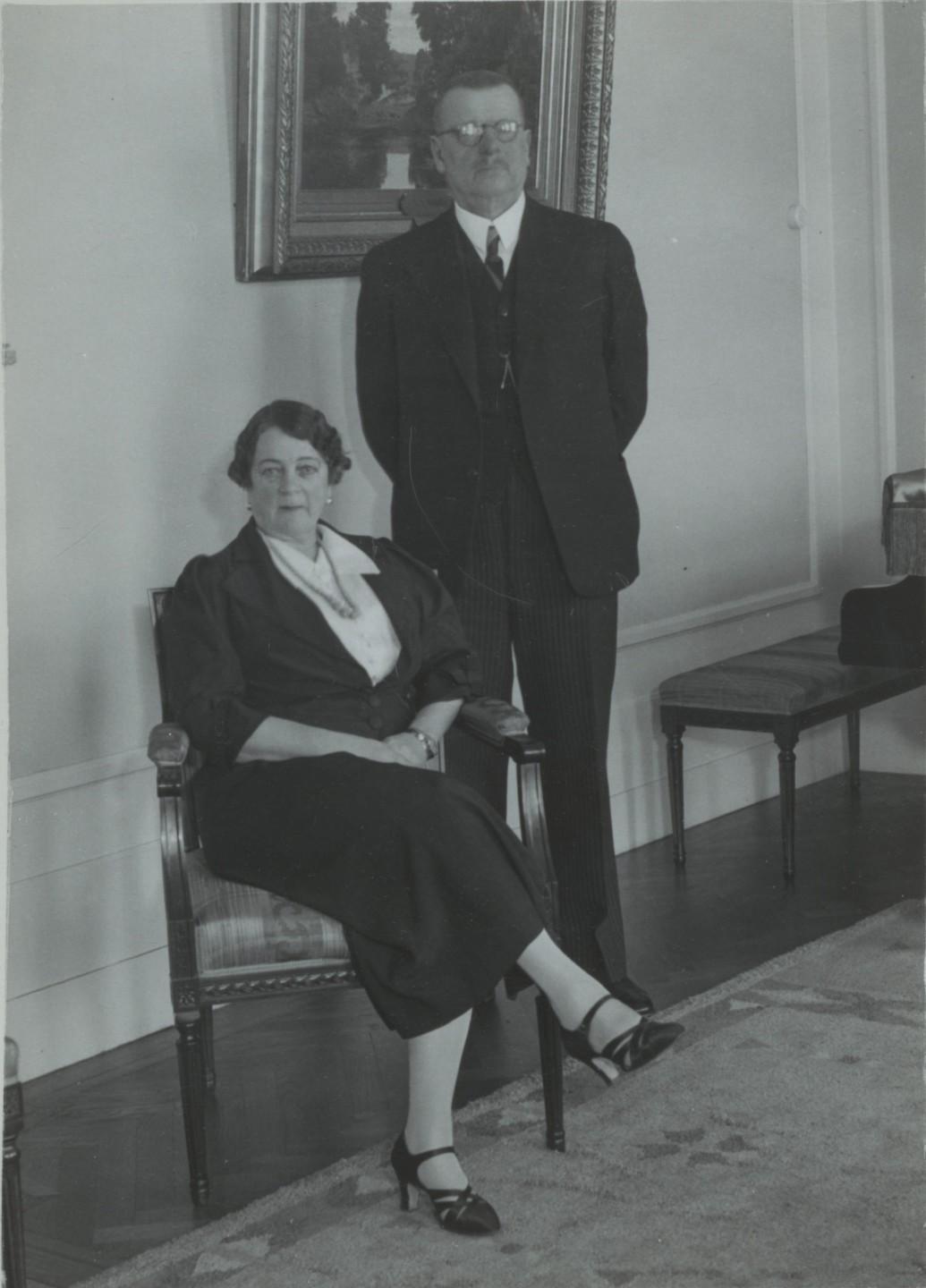
The stylish envoy couple in Stockholm in the 1930s.
Photo: J.K. Paasikivi Archive, National Archive.
After the Second World War broke out in autumn 1939, the Paasikivis returned to Finland for Juho Kusti to attend the talks in Moscow.The talks were fruitless and the Soviet Union invaded Finland. Paasikivi became a minister without a portfolio in Ryti’s government. Alli continued her practice of protecting her husband’s peace and preventing people from taking up small and insignificant issues with him. Paasikivi concentrated on foreign policy while Alli diverted anything to do domestic politics to civil servants and other ministers. In effect, she interfered with the running of the government in a way that would not be possible today. When Paasikivi was appointed Finland’s envoy to Moscow after the Winter War, Alli Paasikivi ran a similarly tight ship and at the Moscow embassy and managed the housekeeping with frugality.
Having experienced the time when Finland was still part of Russia, they were familiar with the Russian customs, culture, and language. Juho kusti held a master’s degree in Russian literature and history. This meant that the Paasikivis were not as far outside their comfort zone in the Soviet Union as most other Western diplomats. Alli Paasikivi continued her passion of collecting antique and porcelain while in Moscow.
After the Continuation War broke out, Paasikivi returned to retirement but kept a close eye on the developments. The family escaped air raids to Jukola, which Alli managed after the death of Varma Paasikivi, her stepson, in 1941. The Paasikivis returned to the limelight after the war, when Paasikivi became Prime Minister in November 1944 and the President of the Republic in 1946.
The elegant First Lady
During her husband’s presidency 1946–1956, Alli Paasikivi assumed the role of an elegant First Lady. Her role as the go-between the temperamental president and the rest of the world continued as before. As the mistress of the Presidential Palace, she showed great taste and enthusiasm. The tradition of Independence Day Reception resumed after the war. The guests were served punch and enjoyed dancing in the ballroom. Alli Paasikivi appeared in state events, although she earned her reputation and love of the nation through her own work with children. She held children’s parties at the Presidential Palace, inviting groups from schools, scouts, and other institutions.
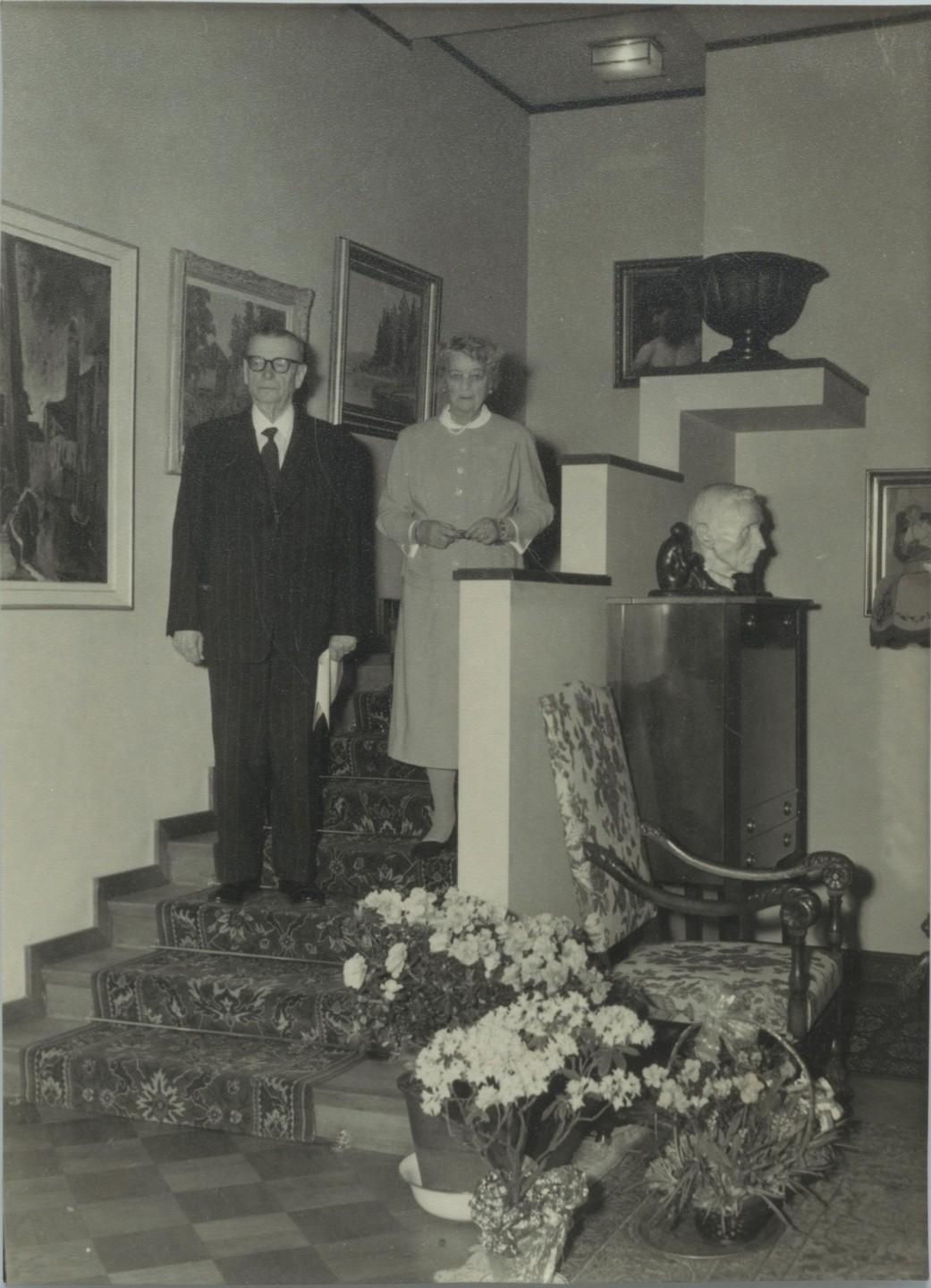
Alli Paasikivi decorated the family home in Espoonkatu (present-day Paasikiven katu) with great sophistication.
Photo: J.K. Paasikivi Archive, National Archive.
The Foundation for Paediatric Research
Alli Paasikivi was a driving force behind the construction projects of the children’s hospital and outpatient clinics and she enlisted her friend, paediatrician Arvo Ylppö to head the fundraising and materials acquisitions. The two also founded the Foundation for Paediatric Research in 1947. It was Alli Paasikivi’s idea that the Foundation would introduce their research findings to financiers on an annual basis. The Alli Paasikivi Trust was established as part of the Foundation in 1961, which awards grants for long-term research projects.
Alli Paasikivi Foundation
The women’s voluntary auxiliary organisation Lotta Svärd was disbanded in 1944 as a condition of the armistice and some of its assets were seized by the state. The organisation had, however, managed to donate some of its assets to the new Finnish Women’s Aid Foundation (from 2004 the Lotta Svärd Foundation), which offered aid and relief to women who had suffered during the war. Alli Paasikivi had not belonged to the Lotta Svärd organisation or participated in the activities of the Finnish Women’s Aid Foundation. A major dispute over the funds seized by the state erupted with the Finnish People’s Democratic League in the Parliament and in the courts. The matter was resolved in compliance with the Associations Act which requires that assets of a terminated association must be used as laid down by the rules of the association or its general principles. The assets were placed in a new private foundation established in 1952 to promote home economics, social work, and research. Alli Paasikivi was asked to give her name to the foundation probably because the far left would not go against Paasikivi. The foundation was headed by persons with a background in either the Agrarian League and the Social Democratic Party and none from the Coalition Party. Alli Paasikivi acted as the patron and honorary chairperson of the foundation. In this capacity, she had a say in defining the purpose of the foundation and its grants policy. As a result, among the beneficiaries were organisations such as the Disabled War Veterans Association of Finland, Mannerheim League for Child Welfare, the Foundation for Paediatric Research, and scouts’ organisations.
Alli Paasikivi attended the board meetings of the Foundation for Paediatric Research and Alli Paasikivi Foundation, which were often held at the Presidential Palace. Judging by the minutes of the meetings, she influenced the activities of the organisations more than her purely ceremonial position warranted. She also allowed the use of her name as a “patron” of several other good causes. She gave her moral support to charities working for wartime tuberculosis sufferers and the war blinded. She joined the Scouting movement inspired by Helvi Maukola (later Sipilä, a diplomat and politician), who also hailed from Kärkölä.
Alli Paasikivi was invited as an honorary member to several organisations and she received multiple decorations from them. These included Save the Children, Finnish Red Cross and the Girl Scouts.
The legacy
Alli Paasikivi continued her work with social issues throughout her husband’s presidency and after his death in 1956. She died in the summer of 1960. She earned her nickname Auntie Alli as an honorary title from the press in the 1950s through her tireless work for good causes. Another, slightly ungracious expression that had been coined in the Finnish language was to refer to women’s loose underarms as “Allis”, which originated from Alli Paasikivi wearing sleeveless ballgowns. She dressed well and represented her country with style and great taste, which were important considerations as Finland made its mark as a Western democracy among others. Her hard work and achievements in the field of social welfare to help lift the country from the rubbles of war were formidable.
Professor Aura Korppi-Tommola, PhD, has published several studies on the history of women and child welfare.She served as the head of research for the Mannerheim League for Child Welfare 1991–2000 and as the Executive Director of the Federation of Finnish Learned Societies 2001–2014.
(1) Passport, correspondence, CX:2, J.K. Paasikivi Archive, National Archive.
(2) Correspondence between the spouses from the 1930s and 1940s, CX:2, J.K. Paasikivi Archive, National Archive.
Sources
Iiris Arajoki-Siikala & Kalervo Siikala, Lotta Svärd ja Alli Paasikivi. Gummerus 2002.
Aura Korppi-Tommola, Alli Paasikivi, www.kansallisbiografia.fi (downloaded 20 July 2020)
Juhani Paasikivi, Monumentin sukua. Otava 1999.
Salme Saure, Maan äidit, Gummerus 1983.
Seppo Tamminen, Lapsen tähden. Lastentautien tutkimussäätiö 50 vuotta. Lastentautien Tutkimussäätiö 2012.
Hilkka ja Olli Witikka, Alli Paasikivi. WSOY 1991.
